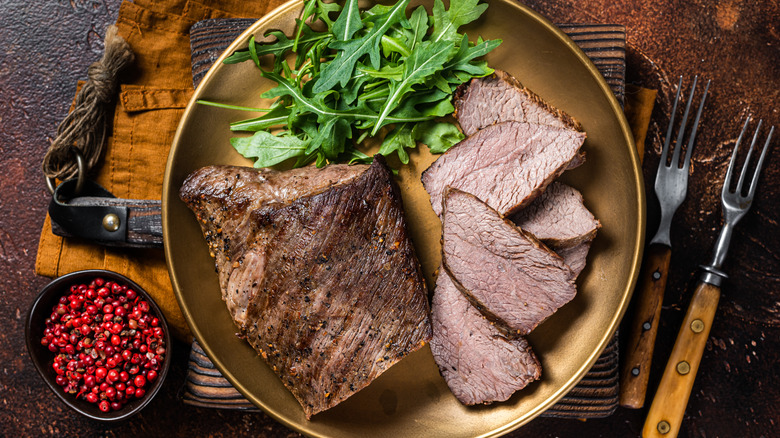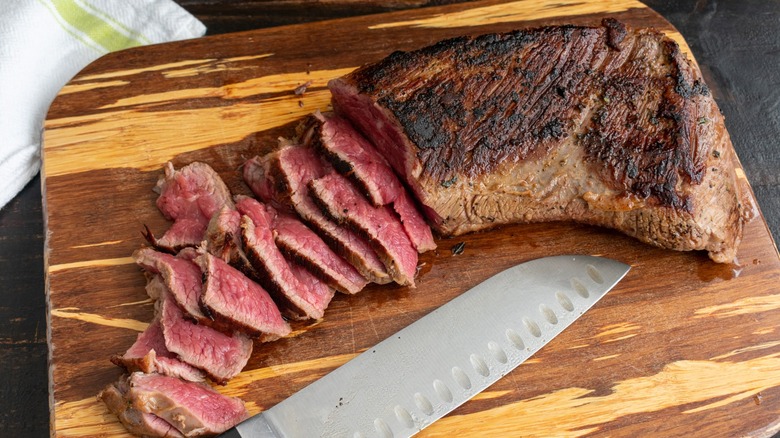Here's How You Should Be Cutting Tri-Tip
We may receive a commission on purchases made from links.
When it comes to cooking steak, the array of rules and recommendations can be overwhelming — best grill, perfect rub, ideal smoker. But let's take a step back and focus on the basics. How can you ensure that your steak, especially a tri-tip, is tender and juicy, and truly worthy of a place at your dinner table? The secret often lies not just in your marinade or grilling technique but in how you cut the meat.
The tri(angle)-tip is a cut from the hindquarter of a cow. It goes by several names depending on where you are: "bottom sirloin," "triangle roast," "Newport steak," on the East Coast, "California cut," or "Santa Maria steak" on the West Coast. Although, if you want to forgo the fancy names, simply ask for a tri-tip roast in the meat department. This cut isn't as fatty as others but it still offers excellent marbling and tenderness at a more budget-friendly price compared to other barbecue meats like brisket.
To keep your tri-tip tender, cutting against the grain is crucial. No, this isn't about battling with sourdough bread — it's all about slicing the meat in a way that shortens the muscle fibers of the tri-tip. You can identify the grain by looking for the white lines in the meat. Once you've determined the direction of these fibers, cut perpendicular to them. For example, if the grain runs vertically, cut horizontally, and vice versa. This technique breaks down the fibers, making the meat more tender and easier to chew.
Tenderize Your Tri-Tip with Science
Long fibers in meat can be a real hassle, often getting stuck in your teeth and making each bite less enjoyable. Severing these fibers directly tenderizes the meat by breaking apart the connective tissue, resulting in an easier bite and reducing the risk of an awkward toothpick incident. Simultaneously, this process ensures a more consistent texture throughout the steak. While slow cooking can further enhance tenderness by allowing the tissue to break down over time, when it comes to tri-top cuts, cutting against the grain using a sharp carving knife brings the best results.
The tri-tip is unique because it has two grain directions: one vertical and one on a slant. When you start preparing your tri-tip, note where these lines are before seasoning, or cut the tri-tip in half where the grains diverge. Since the tri-tip comes from the hindquarters of a cow, it tends to be thick, causing the grain to change naturally at the thickest part of the cut.
Not only does slicing against the grain make the meat more tender, but it also allows your steak to better absorb marinades and glazes, infusing each bite with a burst of flavor. So, why make the tedious task of cutting against the grain more cumbersome? It's a simple step that can greatly improve your tri-tip roast, making your steak experience more tender, flavorful, and enjoyable.

